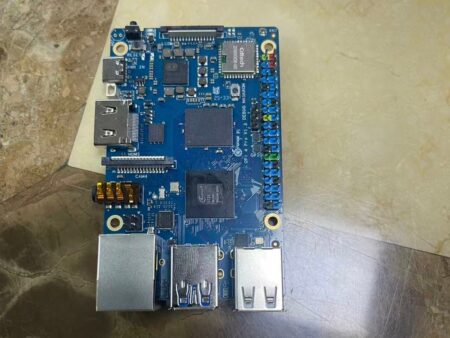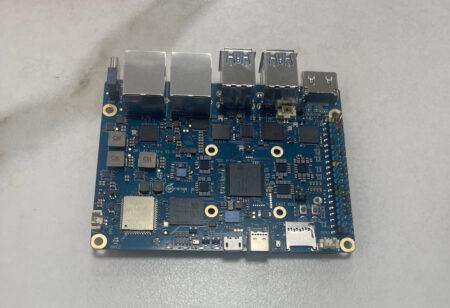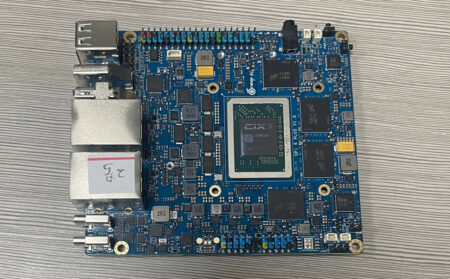- Maybe you missed it? Orange Pi 4 LTS Review
- Orange Pi 3B Price, Features and Specifications.
Orange Pi 3B
The Orange Pi 3B is a cheap single-board computer (SBC) created by Shenzhen Xunlong Software Co., the company behind the well-known Orange Pi brand. The new SBC boasts a mighty quad-core RK3566 processor, delivering outstanding performance. And the best part? It comes at a super low cost of approximately $30 (excluding shipping fees) for the model with 2GB of RAM. At this price point, it really offers good performance value for the buck, especially for users seeking a more balance between processing power and cost.
Specifications
| SoC | RockchipRK3566 |
| CPU | Quad-core 64-bit Cortex-A55 processor, 22nm advanced process, up to 1.8GHz |
| GPU | • ARM Mali G52 2EE graphics processor • Support OpenGL ES 1.1/2.0/3.2, OpenCL 2.0, Vulkan 1.1 • Embedded high performance 2D acceleration hardware |
| NPU | • Integrated RKNN NPU AI accelerator with 0.8 Tops@INT8 performance • Support one-click conversion of Caffe/TensorFlow/TFLite/ONNX/PyTorch/Keras/Darknet architecture models |
| VPU | • 4K@60fps H.265/H.264/VP9 video decoding • 1080P@100fps H.265 video encoding • 1080P@60fps H.264 video encoding |
| PMU | RockChip RK809-5 |
| RAM | 2GB/4GB/8GB (LPDDR4/4x) |
| Memory | • Support eMMC module: 16GB/32GB/64GB/128GB • SPI Flash: 16MB/32MB • M.2 M-KEY slot: SATA3 or PCIe2.0 NVME SSDs • TF card slot |
| Wi-Fi+BT | Wi-Fi 5+BT 5.0,BLE(20U5622) |
| Ethernet | 10/100/1000Mbps Ethernet (On-board PHY chip: YT8531C) |
| Video Output | • 1* HDMI TX 2.0 , up to 4K@60fps • 1*MIPI DSI 2 lane • eDP1.3 |
| Camera | 1*MIPI CSI 2 lane camera interface |
| USB | • 1*USB 2.0 support Device or HOST mode • 1*USB 3.0 HOST • 2*USB 2.0 HOST |
| Audio | 3.5mm headphone jack audio in/out |
| Button | 1* MaskROM key, 1* RESET key, 1 *POWER key |
| FAN | 2Pin 1.25mm size 5V fan connector |
| RTC | 2Pin 1.25mm size battery backup connector |
| 40Pin | 40Pin functional expansion interface, supporting the following interface types: GPIO, UART, I2C, SPI, PWM |
| Power Source | Type-C 5V3A |
| Supported OS | Available operating systems include Android 11, Ubuntu 22.04, Ubuntu 20.04, Debian 11, Debian 12, OpenHarmony 4.0 Beta1, Orange Pi OS (Arch), and others. |
| PCB Dimension | 85mm x 56mm x 17mm |
| Weight | 49g |
Rockchip RK3566 features and highlights
The RK3566 SoC represents an enhanced iteration of the renowned RK3288, boasting a cutting-edge 64-bit CPU, state-of-the-art GPU, and a range of contemporary peripherals. It is expected to be officially announced in the upcoming Rockchip Developer Conference in November.
This general-purpose chip is designed for consumer applications. It features a quad-core ARM Cortex-A55 CPU, an ARM G52 GPU, and a built-in NPU with 1TOPs of computing power. It supports the Android 11 and Linux operating systems.
Categorized as a mid-range SoC that can handle various AIoT scenarios, such as multimedia human-machine interaction, computer vision, and robotics. It has a rich set of interfaces and high-speed peripherals, such as USB 3.0, PCIe 2.0, SATA 3.0, and HDMI 2.0.
Equipped with powerful multimedia decoding and encoding capability, supporting 4K 60fps H.265/H.264/VP9 video decoding and 1080P 60fps H.264/H.265 video encoding. It also has the latest generation (3rd Gen) Rockchip ISP that can process up to 8M@30fps images, supporting HDR, noise cancellation, defogging, and LDCH correction.
Hardware
The Orange Pi 3B is equipped with the advanced Rockchip RK3566 quad-core 64-bit processor, operating at an impressive main frequency of up to 1.8GHz. Its integrated ARM Mali G52 2EE graphics processor provides exceptional graphics performance with support for OpenGL ES 1.1/2.0/3.2, OpenCL 2.0, and Vulkan 1.1.
This powerful board also features a high-performance 2D acceleration module, ensuring smooth and efficient operation. Additionally, it comes equipped with an AI accelerator NPU, boasting an impressive 0.8 Tops computing power. The VPU (Vision Processing Unit) allows for flawless 4K@60fps H.265/H.264/VP9 video decoding and 1080P@100fps H.265 video encoding, as well as 1080P@60fps H.264 video encoding. It supports 8M ISP and HDR for superior image quality.
Hardware configurations
Orange Pi 3B offers various RAM options (2GB, 4GB, or 8GB LPDDR4/4X) and supports different eMMC module sizes (16GB, 32GB, 64GB, or 128GB), providing sufficient storage capacity. It also includes a 16MB/32MB SPI Flash for additional storage flexibility. The board is equipped with Wi-Fi5, BT5.0, and BLE support, ensuring reliable connectivity options.
Orange Pi 3B: Interfaces
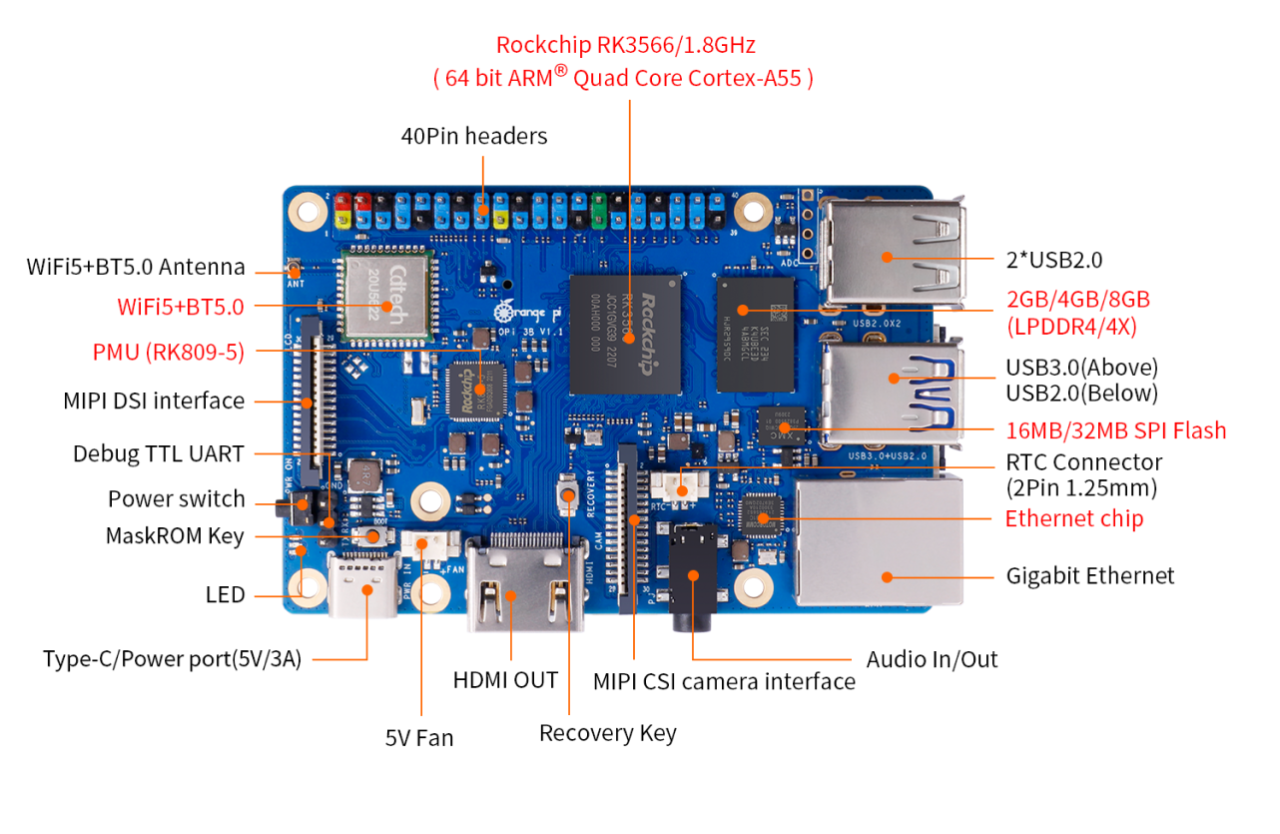
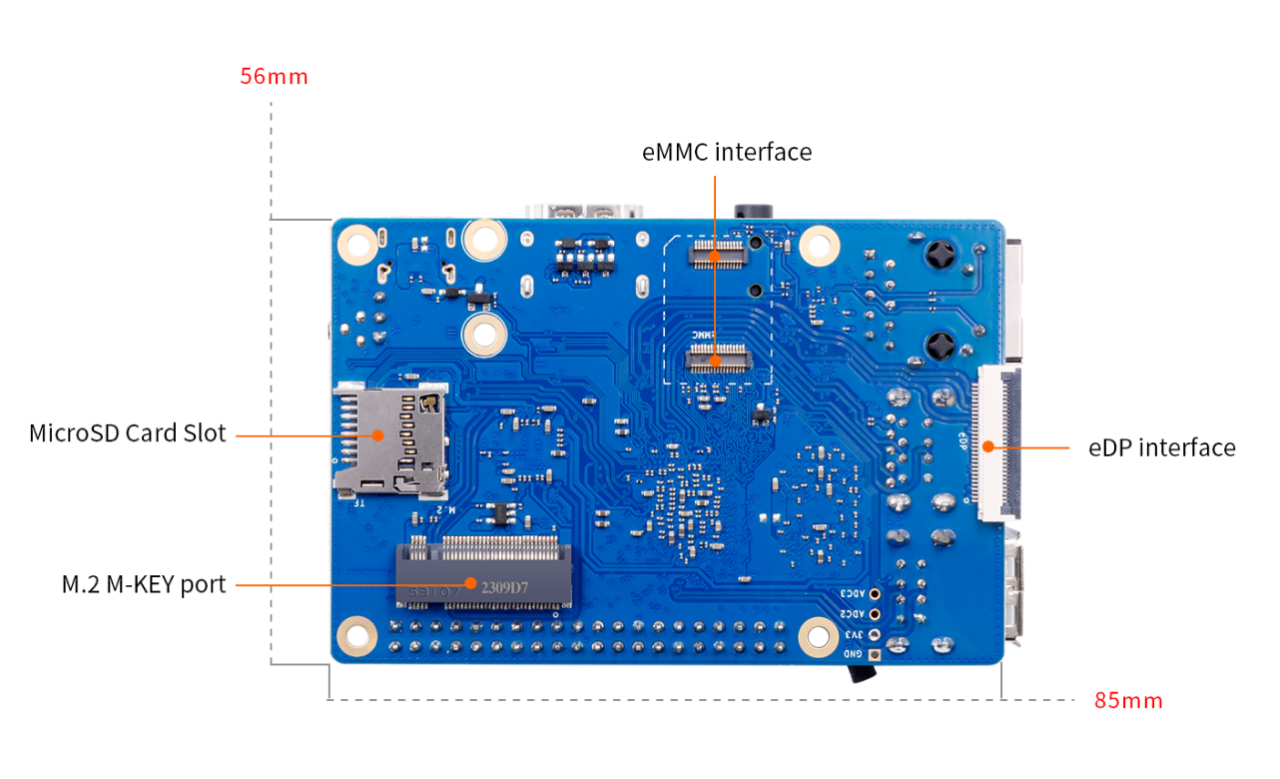
A Closer Look at the Orange Pi 3B
The 3B board’s GPIO header is color coded. This makes it easy to distinguish between different pinouts and functionality. Integrated Wi-Fi / BT is also added. As well as the camera interface, onboard audio and a Display Serial Interface (DSI) are also included. As for the type of Ethernet used, it’s 1GbE type, but we personally prefer 2.5GbE better.
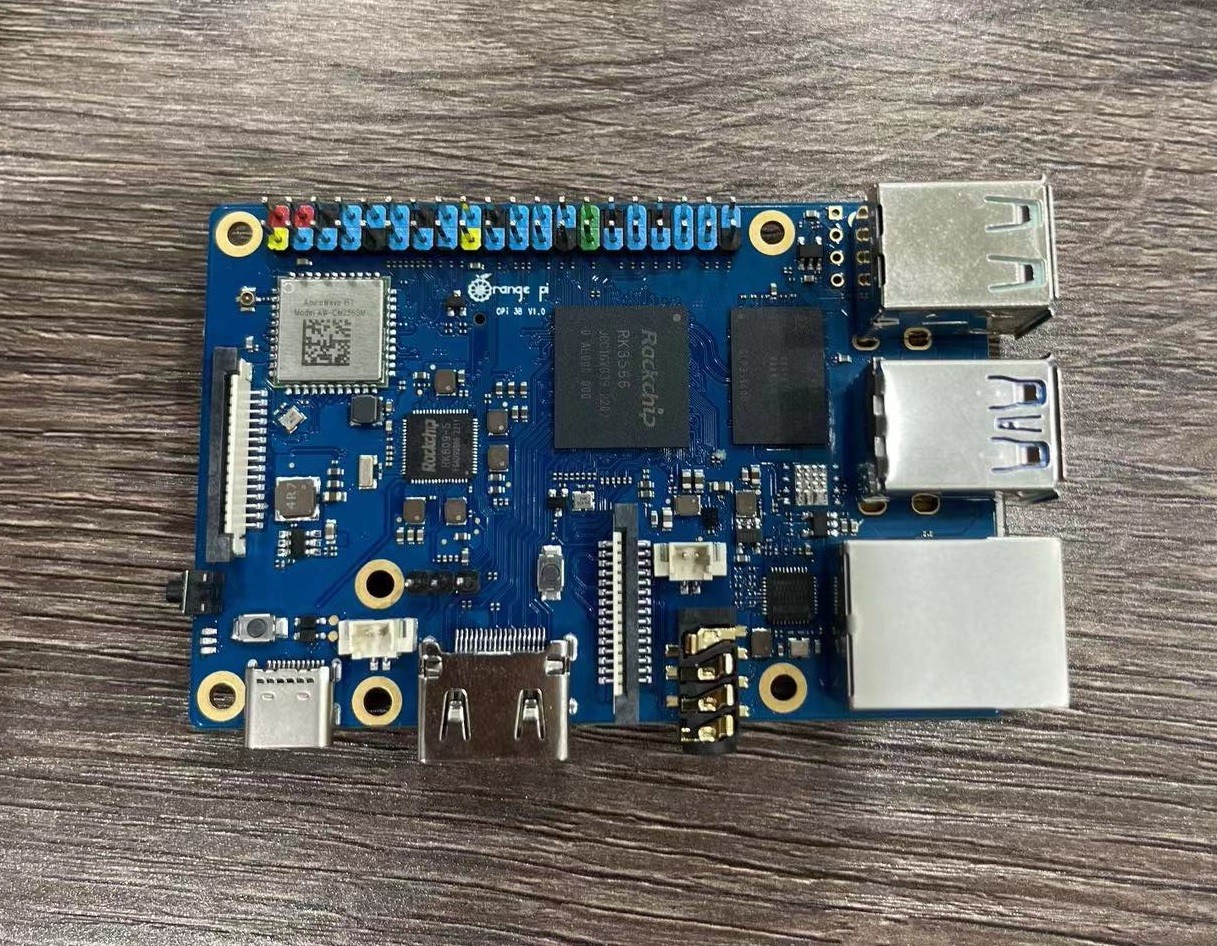
Software Support
The Orange Pi 3B is compatible with a range of operating systems, including Android 11, Ubuntu 22.04, Debian 11, OpenHarmony 4.0 Beta1, and more.
Price and Availability
AliExpress Store
The company sells 2/4/8 GB RAM versions at really cheap prices, ranging from $30 to $61. You can check the table below with the board configurations.
Orange Pi 3B variants (Models) – AliExpress | |||
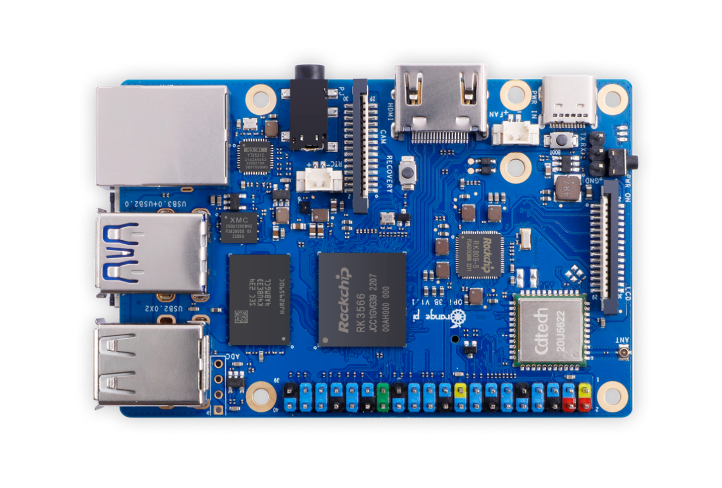 | |||
Package No. | Configuration | Package Content | Price |
Bare board Package | |||
Orange Pi 3B | 2GB RAM | x1 Orange Pi 3B Board x1 User Guide | $30.00 |
Orange Pi 3B | 4GB RAM | x1 Orange Pi 3B Board x1 User Guide | $35.00 |
Orange Pi 3B | 8GB RAM | x1 Orange Pi 3B Board x1 User Guide | $45.00 |
kits (Packages) | |||
Orange Pi 3B SET1 | 8GB RAM+256GB eMMC flash module | x1 Orange Pi 3B Board x1 User Guide x1 256GB eMMC Module | $61.00 |
Orange Pi 3B SET1 | 4GB RAM+64GB eMMC flash module | x1 Orange Pi 3B Board x1 User Guide x1 64GB eMMC Module | $42.00 |
Orange Pi 3B SET1 | 2GB RAM+32GB eMMC flash module | x1 Orange Pi 3B Board x1 User Guide x1 32GB eMMC Module | $35.00 |
This site contains affiliate links to products. We may receive a commission for purchases made through these links. Updated on 7 of August, 2023 | |||
Amazon Store



